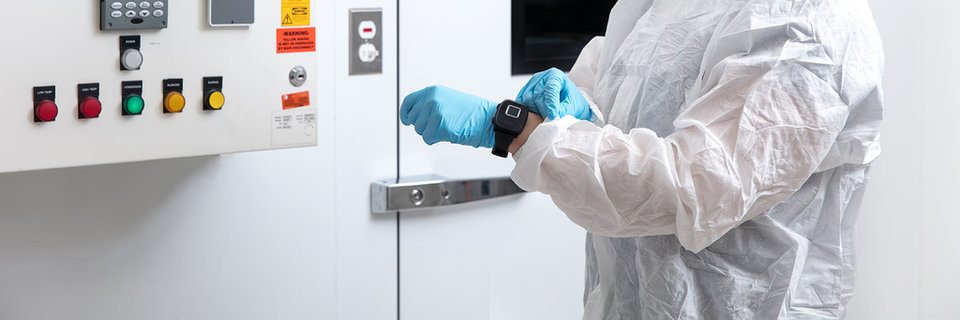Always On Authentication™
We are an enterprise authentication solution for increased security and productivity across pharmaceutical manufacturing.
Nymi Enterprise Edition™ delivers secure authentication solutions to pharmaceutical manufacturing environments. We replace existing point-in-time authentication models often used in manufacturing settings with one that sees its users in a continuously authenticated state throughout their workday.
Click the icons to the right for more information.

Nymi™’s Enterprise Security Solution combines the security of biometrics with a convenient wearable device that addresses critical business needs for data integrity and productivity.
The Nymi Band™ is an innovative, wearable authentication device that allows an enterprise and its regulators’ full knowledge of who has access to facilities, equipment, and applications.
Multi-factor biometric authentication ensures each Nymi Band™ only works while on the wrist of an approved operator, and once
authenticated, cannot be transferred.
Employee Log Ins
Tap with Nymi Band™
Typing username
and password
repeat
100x
daily
Secure, non-repudiable, wireless taps of the Nymi Band™ make cumbersome repetitive tasks, like typing passwords and paper signatures a thing of the past.
With Nymi Enterprise Edition™, logins are replaced with a single action that takes merely a few seconds. The time saved by reducing login times and removing user authentication errors (failed usernames and passwords) leads to dramatic increases in efficiency for manufacturing environments.

Nymi™’s authentication technologies provide data integrity that assures compliance with standards such as the US Food and Drug Administration (FDA) CFR Part 11.
Nymi Enterprise Edition™ is able to assure the integrity of the data being produced on the floor through a combination of biometrics, on-body detection, and strong industry-standard cryptography.
It also provides real-time, on demand traceability and non-repudiable electronic records, which makes simpler, less intrusive audits a reality.